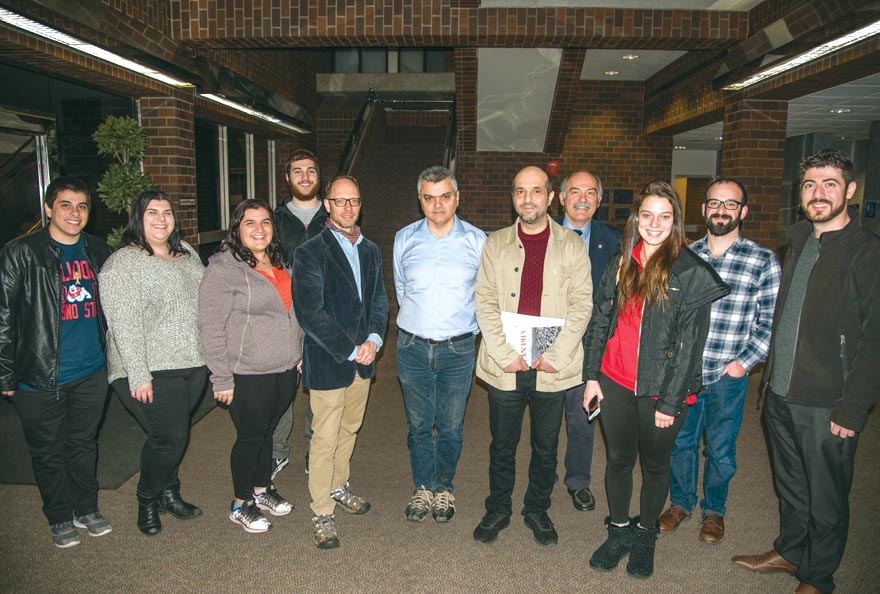
Photo: Hourig Attarian
Claire Kasaian
Staff Writer
London-based Ara Sarafian, director of the Gomidas Institute, introduced his new English translation of Van 1915: The Great Events of Vasbouragan to an audience of students and community members at Fresno State on Friday, February 23.
Van 1915, originally published in Armenian in 1917, was written by Hovhannes Ter Martirosian, a notable personality of the Armenian world, who used the pseudonym “A-Do.”
Sarafian was first introduced to A-Do as a student, when he read an article by A-Do on the Armeno-Tatar clashes of 1905. Sarafian was impressed by the analysis and the depth of A-Do’s work and the meticulous notation of the sources he used. Sarafian later realized the importance of A-Do’s work on Van and thus decided to translate it into English.
At the beginning of World War I, A-Do went to Van to compile a report on what actually happened there, especially the events of April/May 1915. “What A-Do did not realize,” said Sarafian, “was that the fighting and the events were not yet completed. So A-Do found himself to be an eyewitness to what was taking place.”
Sarafian utilized many maps in his presentation which helped in situating the events that he was talking about. He took information from Van 1915 and plotted it on a map so the audience could visually follow the lecture as well.
A-Do provides information about the demography of the region of Van as well. “A-Do provides the names of 458 Armenian villages and settlements in his work,” stated Sarafian. “This information is not found in any other work about the region.”
It is especially important to note that the population in the region of Van was predominantly Armenian and Kurdish. On the eve of World War I, there were about 120,00 Armenian in the region of Van. “In those areas where Armenians were able to defend themselves they often survived,” state Sarafian. “When they did not defend themselves, they were often killed outright.”
A-Do was a witness to what is often called “The Great Exodus of Vasbouragan,” which was the expulsion of the Armenians of the region of Van and Bitlis into the Caucasus in late July through August of 1915. Many Armenians died during the difficult and exhausting journey, but many survived. According to Sarafian as many as one in three residents of Armenia today may be descendants of these refugees.
The Armenians of Van were able to establish a provisional government for a brief period in the summer of 1915, and this is also covered in A-Do’s report.
According to Sarafian A-Do’s work is also significant because it tells of the circumstances of how the Ottoman Empire joined World War I, and of the choice they had to enter or not to enter. The entrance of the Ottoman Empire into World War I would have drastic consequences for the Armenian as they became a targeted population. For example, the Ottoman government drafted the Armenian men into the army, but later disarmed them and in many cased killed them outright.
A-Do’s book focuses on the events surrounding the defense of Van, and pinpoints the beginning of the Turkish attacks on April 16, 1915.
A-Do plays an extremely important role in documenting the history of Van, because he recorded the stories of survivors.
“I believe that A-Do’s work provides evidence of the government’s decision to systematically kill of Armenians was a political decision,” concluded Sarafian.
“The Armenian sources for the period provide an underutilized resource for the study of the Armenian Genocide.”
 Hye Sharzhoom Armenian Action
Hye Sharzhoom Armenian Action